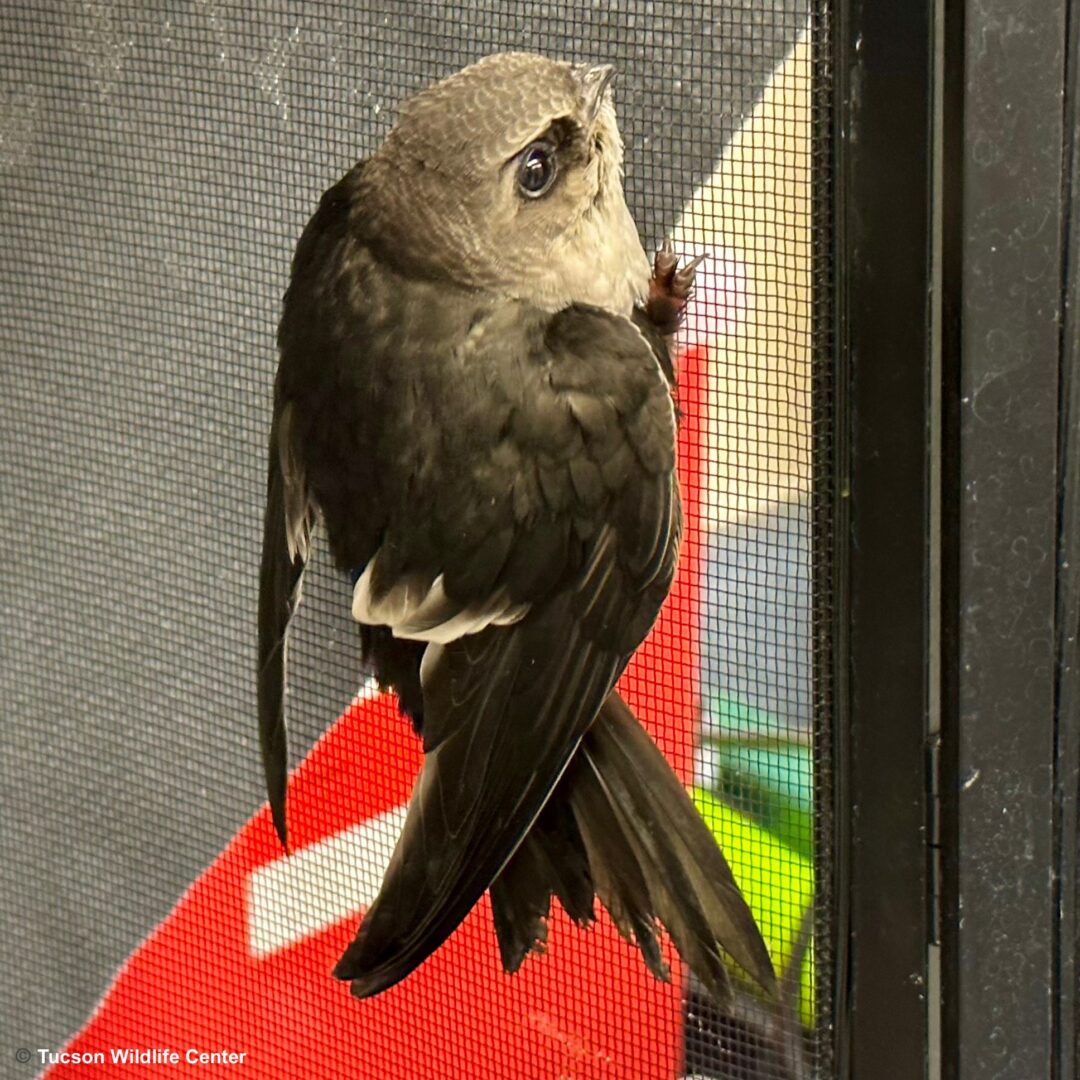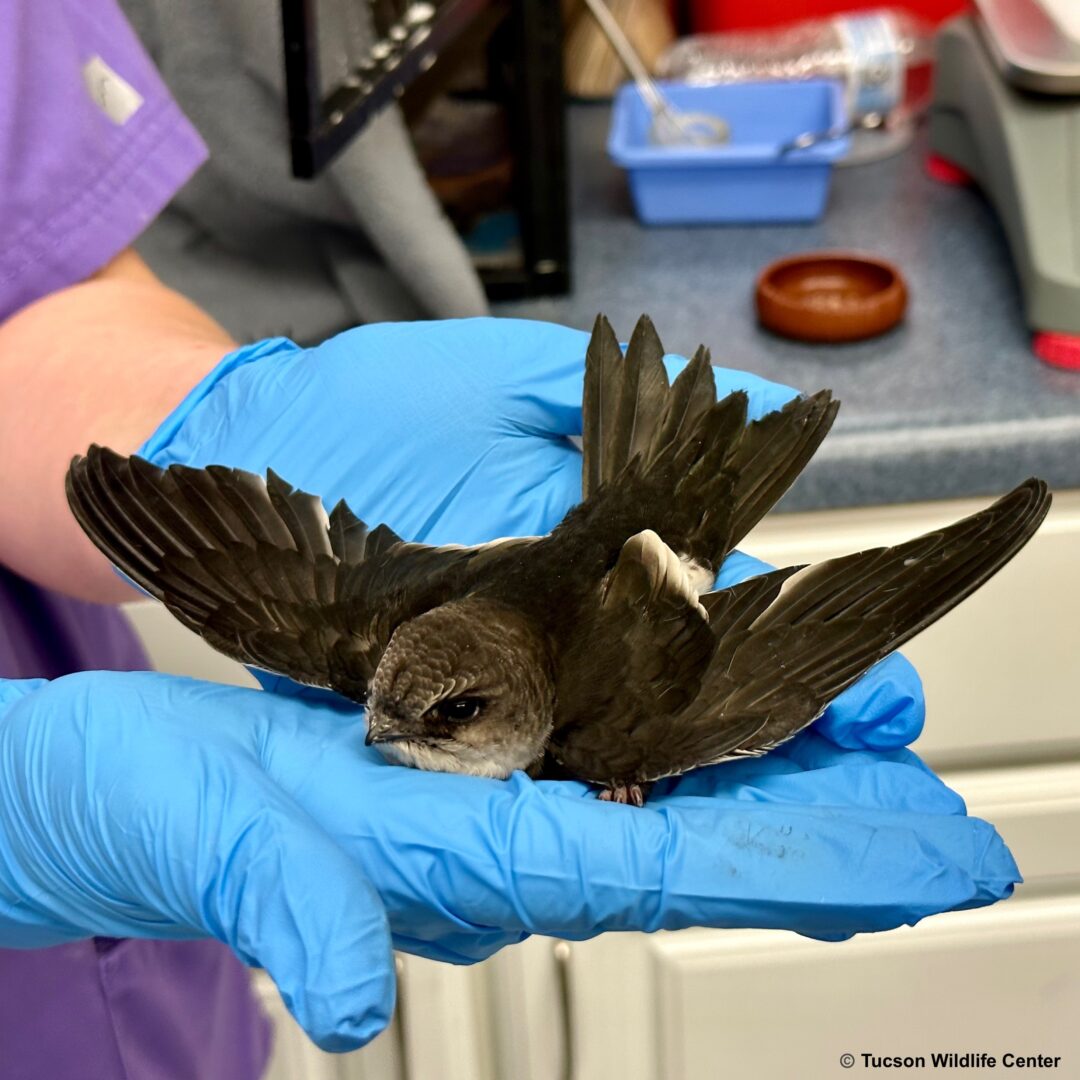
Juvenile White-throated Swift
This striking white-throated swift has quickly turned the wildlife care team at Tucson Wildlife Center into “Swifties” (minus the billion dollar tour). Rescued from a parking lot after a possible auto window strike, this little guy is beginning to exercise his wings to strengthen muscles he will need upon release, as one of the fastest flying birds in North America.
Swifts spend most of their time in the air, foraging for flying insects. Eating, drinking, bathing, even courtship take place in the air. During mating the pair tumbles downward, sometimes for over 500 feet. Nests are built in crevices of cliffs and are made of grass and feathers glued together with saliva. The same nest sites may be used year after year by a colony of these social birds.
Although the family name means “without feet,” swifts do have feet—unusual ones, in which the four toes point forward. This, and their exceptionally long claws, allow them to cling to vertical surfaces, such as cliff faces or nests. The legs of swifts are small and weak, as suits a bird that rarely touches down. *
* www.desertmuseum.org/books/nhsd_swift.php
For helpful information on preventing window strikes (especially at home), visit Tucson
Audubon Society’s Bird-safe Buildings Program webpage, https://tucsonaudubon.org/bird-safe-
buildings/ .
If you would like to help patients like this white-throated swift, please click the donate button below.
Another way you can contribute is to visit our “wish list” on Amazon by clicking on the Amazon Wish List button below. We appreciate it, as will all the wild animals in our care!



